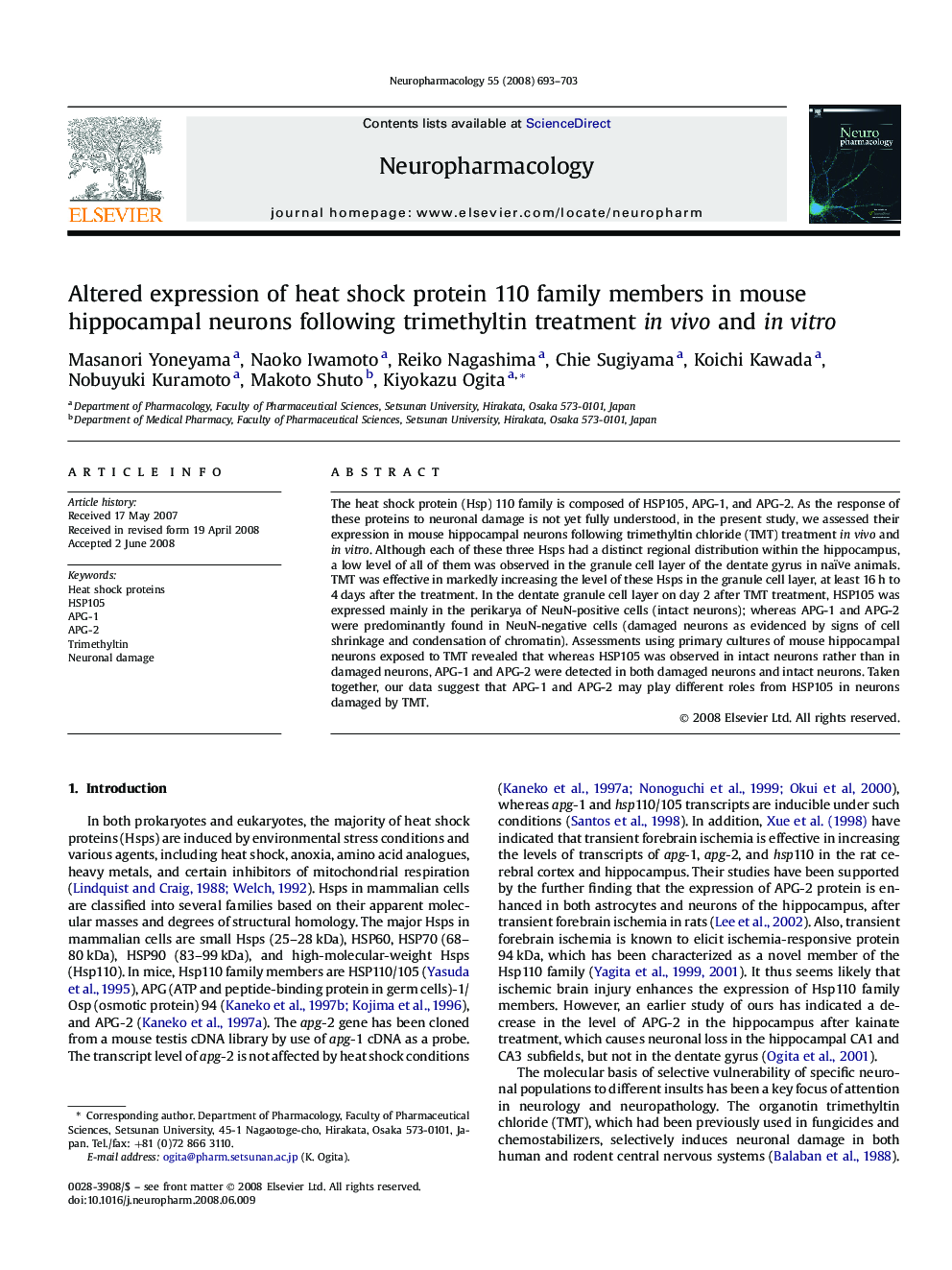| Article ID | Journal | Published Year | Pages | File Type |
|---|---|---|---|---|
| 2494614 | Neuropharmacology | 2008 | 11 Pages |
The heat shock protein (Hsp) 110 family is composed of HSP105, APG-1, and APG-2. As the response of these proteins to neuronal damage is not yet fully understood, in the present study, we assessed their expression in mouse hippocampal neurons following trimethyltin chloride (TMT) treatment in vivo and in vitro. Although each of these three Hsps had a distinct regional distribution within the hippocampus, a low level of all of them was observed in the granule cell layer of the dentate gyrus in naïve animals. TMT was effective in markedly increasing the level of these Hsps in the granule cell layer, at least 16 h to 4 days after the treatment. In the dentate granule cell layer on day 2 after TMT treatment, HSP105 was expressed mainly in the perikarya of NeuN-positive cells (intact neurons); whereas APG-1 and APG-2 were predominantly found in NeuN-negative cells (damaged neurons as evidenced by signs of cell shrinkage and condensation of chromatin). Assessments using primary cultures of mouse hippocampal neurons exposed to TMT revealed that whereas HSP105 was observed in intact neurons rather than in damaged neurons, APG-1 and APG-2 were detected in both damaged neurons and intact neurons. Taken together, our data suggest that APG-1 and APG-2 may play different roles from HSP105 in neurons damaged by TMT.
